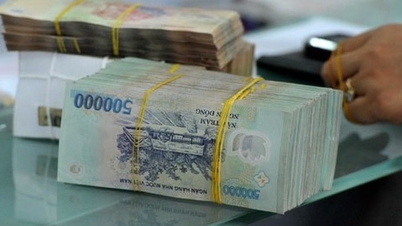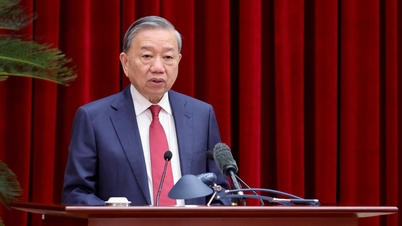This is because rising asset prices have spurred more spending by consumers, who account for 70% of US GDP. This wealth effect has become significantly stronger over the past 15 years.

According to Bernard Yaros, chief US economist at Oxford Economics, every 1% increase in equity wealth now raises consumption by 0.05%, compared with just 0.02% in 2010. At the same time, every $1 increase in housing value raises consumption by $0.04, up from $0.03 previously.
“When households see their wealth increase, they tend to feel more confident about their personal finances and are willing to spend more. The increase in wealth also encourages them to withdraw capital from housing or sell appreciated stocks to finance current spending,” Yaros wrote in a report.
He predicts the wealth effect will continue to grow in the coming years as a growing proportion of retirees, who have higher net worths, rely more on their accumulated wealth to sustain spending when they no longer have labor income.
In addition, the proliferation of digital media makes consumer psychology more responsive to market fluctuations, further reinforcing the "wealth effect".
This effect partly explains why US consumption remains resilient, despite the trade war initiated by President Donald Trump, which has kept inflation high and businesses hesitant to hire. Meanwhile, artificial intelligence (AI) continues to be the main driving force pushing the stock market to new record highs.
At the same time, AI-related technology stocks such as Nvidia, Microsoft, and Google are becoming pillars of the market.
Based on his model, Yaros estimates that the surge in tech stocks over the past 12 months has added nearly $250 billion to consumer spending, or more than 20% of the total increase in consumer spending.
“Although the stock market is not the economy, the economy is now more exposed than ever to market fluctuations,” he warned.
JPMorgan analysts agree. They estimate that 30 AI-related stocks have added more than $5 trillion to U.S. households’ wealth over the past year, boosting annual spending by about $180 billion—or 0.9% of total consumption. That figure could rise if AI continues to spread to other stocks or assets like real estate.
Notably, investing in stocks is no longer the preserve of the wealthy. More than 54% of Americans earning between $30,000 and $79,999 a year are now individual investors, and half of them have only started investing in the past five years, according to a survey by BlackRock and Commonwealth Funds.
But the rich still spend the most. Moody's research shows that the top 10% of income groups account for half of total spending in the second quarter of 2025, a historic high.
Michael Brown, senior strategist at Pepperstone, said this was a result of the wealth effect from stocks and real estate, plus income disparities.
“Put it all together and we have an economy that is increasingly dependent on discretionary spending by high-income earners, while they are dependent on the stability of risk assets,” he said.
This means that the Federal Reserve, which conducts monetary policy, and the US Congress , which decides fiscal policy, both have stronger incentives to support the stock market.
Because the “wealth effect” works both ways: when asset prices fall, spending and growth also slow down.
“We are seeing an economy that is increasingly tied to equity markets and an equity market that is increasingly dependent on consumer spending. These two factors combine to create a ‘safety cushion’ for risk assets, with fiscal policy remaining supportive and monetary policy becoming more accommodative,” Brown concluded.
Source: https://thoibaonganhang.vn/fed-co-nhieu-dong-luc-hon-de-ho-tro-pho-wall-172942.html



![[Photo] The road connecting Dong Nai with Ho Chi Minh City is still unfinished after 5 years of construction.](https://vphoto.vietnam.vn/thumb/1200x675/vietnam/resource/IMAGE/2025/11/04/1762241675985_ndo_br_dji-20251104104418-0635-d-resize-1295-jpg.webp)


![[Photo] Opening of the 14th Conference of the 13th Party Central Committee](https://vphoto.vietnam.vn/thumb/1200x675/vietnam/resource/IMAGE/2025/11/05/1762310995216_a5-bnd-5742-5255-jpg.webp)
![[Photo] Panorama of the Patriotic Emulation Congress of Nhan Dan Newspaper for the period 2025-2030](https://vphoto.vietnam.vn/thumb/1200x675/vietnam/resource/IMAGE/2025/11/04/1762252775462_ndo_br_dhthiduayeuncbaond-6125-jpg.webp)

































































































Comment (0)